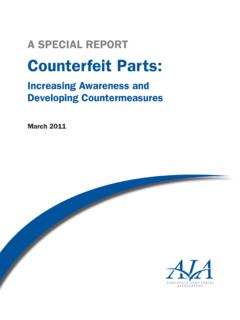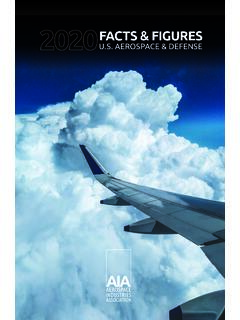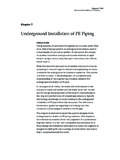Transcription of 1.0 BASIS OF ESTIMATE (BOE) “HOW TO”
1 UNCLASSIFIED JSCC BOE Guidebook Section XXXXX A-1 UNCLASSIFIED BASIS OF ESTIMATE (BOE) HOW TO Definition A BASIS of ESTIMATE (BOE) is a document that identifies the logic, data, methodology and calculations used to ESTIMATE the resources required to perform a specific task or group of related tasks. BOEs detail the thought process and calculations used to arrive at the ESTIMATE . BOEs are used to provide proposal evaluators with a reasonable, credible and defendable technical and cost narrative that supports the proposed effort for the estimated resources. A BOE includes the following content: Work Breakdown Structure (WBS) element number and title Statement of Work (SOW)1 requirement being addressed (where applicable) Technical activities required to meet the SOW requirement Task description including the disciplines required to perform the scope(the description of tasks and the technical approach shall be consistent with other parts of the proposal) WBS element/task contract deliverables Planned risk mitigation activities (where applicable) A staffing plan to show the ramp up and roll off of resources over the period of performance.
2 Recurring/Nonrecurring effort will be segregated where required (separate BOEs for NR/REC not mandatory) Estimating methods. Provide methods and calculations, used to develop the specific ESTIMATE The BOE demonstrates to the proposal evaluator that the contractor has reviewed and understands the RFP, including the SOW and deliverables, and has assessed the required resources by cost element (Labor, Material, Subcontractor and/or Other Direct Cost) for the product and/or services to be provided. When done properly, a BOE demonstrates cost credibility and realism based on the analysis provided in written Technical/Cost/Schedule Inter-relationship The BOEs must be fully aligned and integrated with all aspects of the offering including the technical solution, teaming relationships with geographic locations, and the proposed programmatic plans and processes.
3 This integration ensures the BOEs provide a solid foundation for cost and schedule performance measurement. BOE Development There are seven (7) basic steps in the development of high quality and fully compliant BOEs. Central to the BOE development process is assigning the appropriate estimating method to be used, the relevant historical programs to utilize in the development of the BOE, and the applicable adjustments made (if required). Table outlines the seven step process. Table seven Steps of a Quality and Compliance BOE 1 Statement of Work is also sometimes referred to as a Performance Work Statement (PWS). For the purposes of this Guidebook we will refer to a SOW as it is the predominant name used in Request for Proposals (RFPs) 2 Estimating, of course is not an exact science. A good BOE is one that demonstrates cost realism and reasonableness to a majority of independent knowledgeable evaluators.
4 For a definition of cost realism reference FAR Subpart UNCLASSIFIED JSCC BOE Guidebook Section XXXXX A-2 UNCLASSIFIED step 1 Plan the Development of the EstimateStep 2 Develop the Execution PlanStep 3 Determine the Scope of Effort to EstimateStep 4 Select the Appropriate Estimating MethodStep 5 Develop the Resource EstimateStep 6 Timephasethe EstimateStep 7 Document the Process and ResultsEffort and Schedule Span Correlate?YESNO Plan the Development of the ESTIMATE To develop a high quality and compliant BOE, it is important to determine the availability of relevant historical data and analyze applicable historical data for potential incorporation into the BOE. In addition, continuous validation of the integration of other proposal products is required ( programmatic and technical baseline, IMP/IMS, etc). Ensuring that required processes and tools are available to the BOE team early in the proposal process is mandatory for success.
5 ESTIMATE organization (including BOE product prerequisites), a well defined scope of work, and methodology development planning enable high quality and fully compliant BOEs. Use the following check list during the planning stage to ensure proposal compliance and integration ESTIMATE Organization and BOE Prerequisites o WBS Structure and Dictionary - Review and or/develop the WBS and an (Organizational Breakdown Structure) OBS WBS should be developed in accordance with MIL-STD-881C, OBS is company unique o CLIN structure - Review CLIN cost accountability requirements (if required) o Request for Proposal (RFP) Program overview, specifications, system availability requirements, schedule constraints, etc. o Ground rules and assumptions generate the underlying assumptions required for your ESTIMATE to be valid BOE Tips & Tricks Keep your BOE concise for the evaluator to understand and evaluate Start with actual data from completed programs and adjust appropriately as warranted with appropriate justification and rationale Minimize the use of engineering judgment whenever possible The time and resources invested in each step will vary from one BOE to another but all stages are important in developing a compliant BOE of high quality.
6 UNCLASSIFIED JSCC BOE Guidebook Section XXXXX A-3 UNCLASSIFIED o Responsibility Assignment Matrix - Develop a Proposal Responsibility Assignment Matrix (RAM), providing a full accounting of tasks, deliverables, and responsible parties Integrated Master Plan (IMP) and Integrated Master Schedule (IMS) or Program Schedule - Develop hierarchy of program events and the schedule (IMP/IMS)Scope of Effort Estimated depicting vertical traceability from Master Schedule and horizontal relationships between all dependent tasks. o Buying customer, prime contractor, and all subordinate subcontractor schedules are in concert with the requirements contained in the highest-level master schedule o Statement of Work (SOW) / Statement of Objectives (SOO) / Technical Requirements Document (TRD), etc. as applicable o Contract Data Requirements List (CDRL) o Government Furnished Properties/Items (GFP/GFI) - Review GFP/GFI o Deliverables - Product and/or Services to be provided Estimating Development Support o Identify relevant past performance programs that can be used for historical data, technical and programmatic attributes, or metrics that support cost credibility and realism and development of applicable ESTIMATE attributes o Identify and present any unique Strategies, Value Propositions (VPs), process improvements, and/or cost efficiencies that are not present in historical data and drive affordability o Provide a BASIS for the Proposed Labor Skill Mix (include a Labor Category Dictionary with the proposal) Develop the Execution Plan Early and sufficient planning is critical to success.
7 Identifying and generating the requisite reference materials and identification of specific proposal requirements reduces re-work, prevents schedule delays, and ensures availability of the required resources and tools. Early communication with cognizant proposal and functional personnel can aid in building a BOE team early and is critical for success. Determine the Scope of Effort to ESTIMATE The scope of work estimated including program planning, scheduling, WBS/OBS, CLIN and other organizational elements must all be fully integrated. The BOEs must be fully aligned and linked with all aspects of the offering. Select the Appropriate Estimating Method Selection of an appropriate estimating method (Analogy, Cost Estimating Relationship (CER), Cost Models, Level of Effort, Engineering Judgment or Task Based) begins with the type and availability of data to support the ESTIMATE .
8 Consider that a well supported data-driven ESTIMATE utilizes verifiable information traceable to approved Business Systems ( Accounting System, Procurement System, Time Keeping System, etc.) and applies adjustments as warranted with appropriate, concise, and complete justification and rationale. Table defines the estimating methods and the minimum information required for each one. UNCLASSIFIED JSCC BOE Guidebook Section XXXXX A-4 UNCLASSIFIED Table Estimating Method Requirements Analogy Analogy is an ESTIMATE derived from the historical actual cost/hours of a similar system/subsystem/end item. Factors may be applied for scope, technical and programmatic differences. Identify the analogous program that has already been completed and why it is relevant to the same or similar task ESTIMATE . Include the relevant project name, project/contract number, period of performance, and task definition Describe the CWBS element from which the analogous historical data is derived and make a subjective evaluation and identification of the differences between the new system and historical system(s).
9 The hours and cost impact of the technical differences must be identified. Describe a clear trace to how the analogous data was used to derive the current ESTIMATE . This method is appropriate very early in the program life cycle when the system is not yet fully defined. Cost Estimating Relationship (CER) A CER ESTIMATE is based on relevant historical, statistically correlated relationships. The mathematical equation represents the statistical relationship between independent and dependent variables of historical data. An assessment defines the degree of similarity, enabling the estimator to develop comparative values ( hours per drawing design). Percentage relationships, which are also a form of a CER, are based on cost history, the results crosschecked with similar programs, and a graph or a table backs up the percent relationship in the BOE to show the proportion of the relationship.
10 Identify the base ( independent variables) to which the CER is applied. Describe the database used to create the CER and provide the relevant statistics, such as mean and standard deviation of independent variables, number of data points, data range, standard error of the CER, R2, t-statistics, F-statistic, and prediction intervals. List the equation, input variables used for the ESTIMATE , and the output value calculated. If any discrete adjustments are made to the output value, describe and provide rationale for the adjustment and the resultant ESTIMATE . Annotate if the CER is reviewed and approved by DCMA or another government agency. If the CER is published or provided by another organization, identify the source. Contractor in-house CERs will be documented and provided as part of the proposal. UNCLASSIFIED JSCC BOE Guidebook Section XXXXX A-5 UNCLASSIFIED Cost Model A Cost Model is a mathematical compilation of one or many estimating techniques that derives project cost or effort from attributes/metrics of the subject project.






![arXiv:1606.02147v1 [cs.CV] 7 Jun 2016](/cache/preview/c/3/2/0/7/5/d/8/thumb-c32075d8c6d565bd17ba9d782e17ffcb.jpg)
